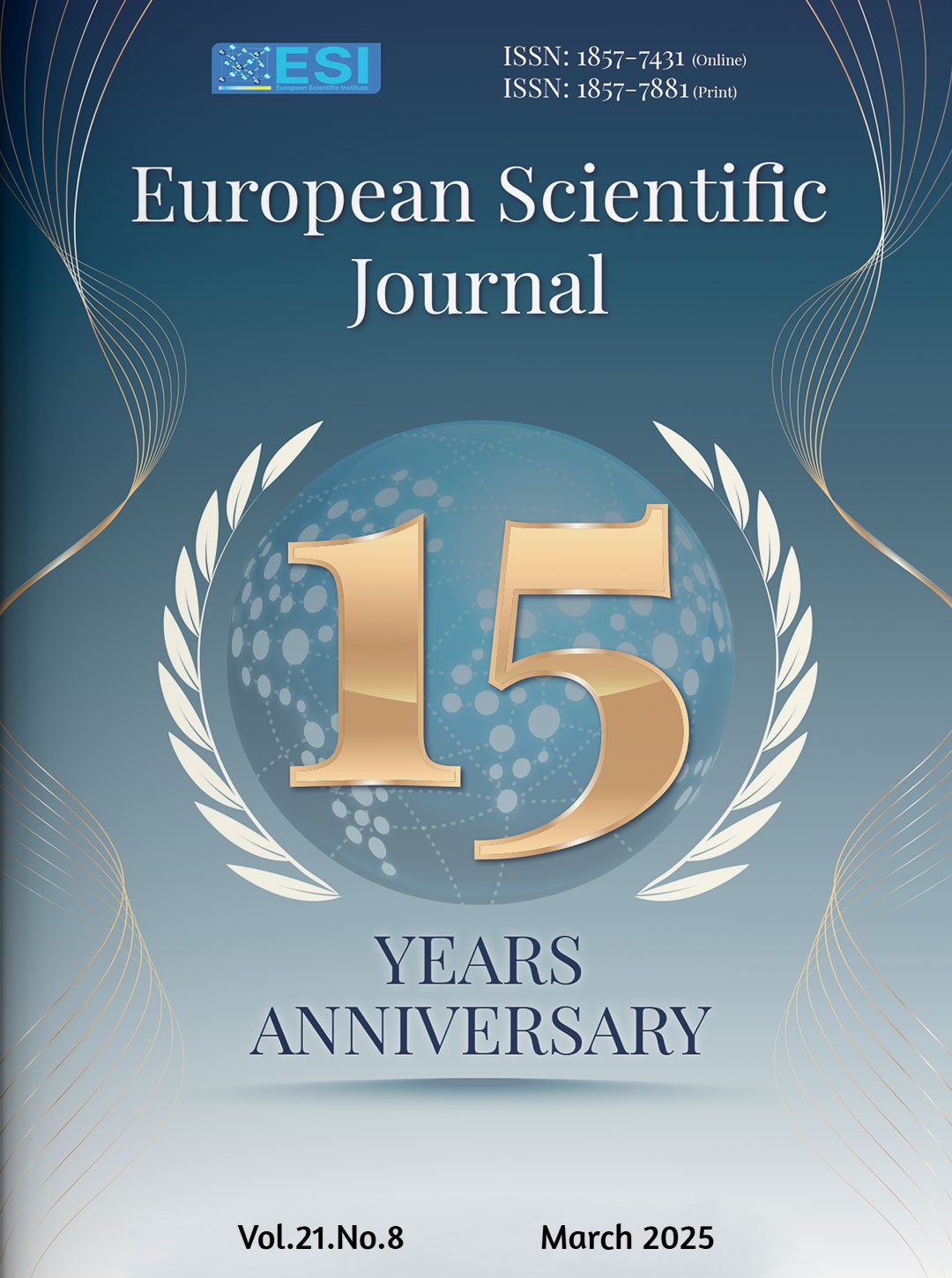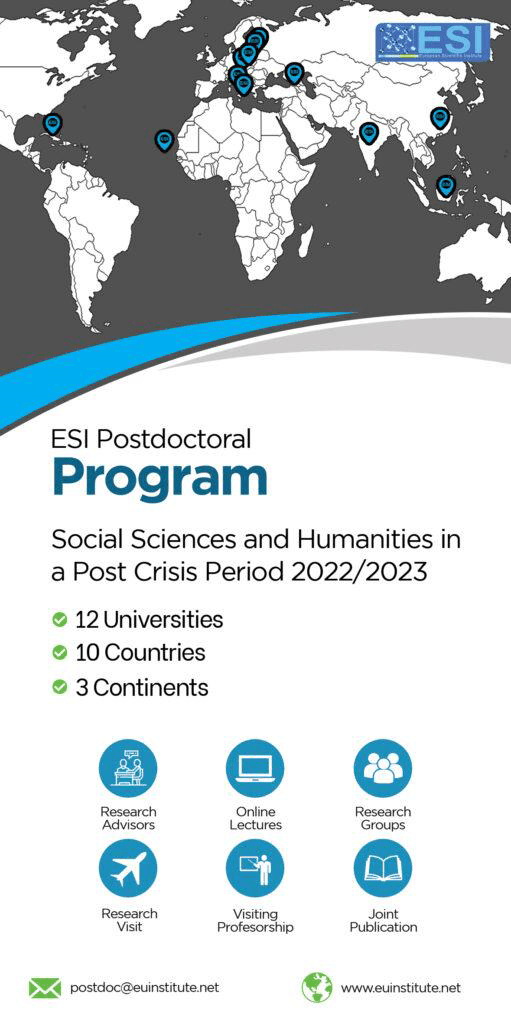Singing from the Same Hymn Sheet? A Semantic and Convergence Analysis of the Extent to Which ‘Smart’ is Similarly Understood and Applied Across Energy, Transport, and Waste Management Sectors of Urban Planning
Abstract
The term ‘smart’ is widely used in urban planning, and it is often linked to the use and adoption of technologies or cost-efficiency measures in support of urban development and management. Whether the term is consistently understood and applied to inform practice across different policy sectors is unclear. This paper explores the understandings and applications of the term ‘smart’ within energy, transport, and waste management sectors of urban planning. A systematic literature review, guided by PRISMA criteria, was conducted, and NVivo-based coding was used to assess convergence. The findings provide a comprehensive profile of the term’s convergent and differential understandings and reflect on the scope for standardized terminology for ‘smart’ in urban planning. The term broadly describes a means of ‘deploying mechanical solutions’ pursuing efficiency and optimization, rather than ‘transformational outcomes’ e.g. sustainability. Thus, meaning and different eco-modernism goals are pursued in each sector, steeped in a language of technology-based paradigm, but hollow in meeting any fundamental transformation of the status quo. We conclude that while the concept of ‘smart’ can be adapted to different socio-economic and regional contexts, it requires a shared theoretical foundation. Future research could explore whether differences in understanding and application may be observed at regional levels.
Downloads
Metrics
PlumX Statistics
References
2. Albino, V., Berardi, U., & Dangelico, R. M. (2015). Smart Cities: Definitions, Dimensions, Performance, and Initiatives. Journal of Urban Technology, 22(1), 3–21. https://doi.org/10.1080/10630732.2014.942092
3. Aliero, M. S., Asif, M., Ghani, I., Pasha, M. F., & Jeong, S. R. (2022). Systematic Review Analysis on Smart Building: Challenges and Opportunities. In Sustainability (Switzerland) (Vol. 14, Issue 5). MDPI. https://doi.org/10.3390/su14053009
4. Allam, Z., & Dhunny, Z. A. (2019). On big data, artificial intelligence and smart cities. Cities, 89, 80–91. https://doi.org/10.1016/J.CITIES.2019.01.032
5. Almalki, F. A. (2020). Implementation of 5G IoT Based Smart Buildings using VLAN Configuration via Cisco Packet Tracer. International Journal of Electronics Communication and Computer Engineering, 11.
6. Alrashed, S. (2020). Key performance indicators for Smart Campus and Microgrid. Sustainable Cities and Society, 60, 102264. https://doi.org/10.1016/J.SCS.2020.102264
7. Andronie, M., Lăzăroiu, G., Iatagan, M., Hurloiu, I., & Dijmărescu, I. (2021). Sustainable cyber-physical production systems in big data-driven smart urban economy: A systematic literature review. Sustainability (Switzerland), 13(2), 1–15. https://doi.org/10.3390/SU13020751
8. Bennett, C. J. (1991). What Is Policy Convergence and What Causes It? British Journal of Political Science, 21(2), 215–233. https://doi.org/10.1017/S0007123400006116
9. Broo, D. G., & Schooling, J. (2021). Digital twins in infrastructure: definitions, current practices, challenges and strategies. International Journal of Construction Management. https://doi.org/10.1080/15623599.2021.1966980
10. Bruzzone, M., Dameri, R. P., & Demartini, P. (2021). Resilience Reporting for Sustainable Development in Cities. Sustainability 2021, Vol. 13, Page 7824, 13(14), 7824. https://doi.org/10.3390/SU13147824
11. Cai, M., Kassens-Noor, E., Zhao, Z., & Colbry, D. (2023). Are smart cities more sustainable? An exploratory study of 103 U.S. cities. Journal of Cleaner Production, 416, 137986. https://doi.org/10.1016/J.JCLEPRO.2023.137986
12. Cavada, M., Hunt, D. V. L., & Rogers, C. D. F. (2016). Do smart cities realise their potential for lower carbon dioxide emissions? Proceedings of the Institution of Civil Engineers: Engineering Sustainability, 169(6), 243–252. https://doi.org/10.1680/JENSU.15.00032
13. Cui, X., Li, F., & de Vries, W. T. (2023). Smart Land Use Planning: New Theories, New Tools and New Practice. Land, 12(7). https://doi.org/10.3390/LAND12071315
14. De Jong, M., Joss, S., Schraven, D., Zhan, C., & Weijnen, M. (2015). Sustainable–smart–resilient–low carbon–eco–knowledge cities; making sense of a multitude of concepts promoting sustainable urbanization. Journal of Cleaner Production, 109, 25–38. https://doi.org/10.1016/J.JCLEPRO.2015.02.004
15. Dhakal, K. (2022). NVivo. Journal of the Medical Library Association : JMLA, 110(2), 270. https://doi.org/10.5195/JMLA.2022.1271
16. Docherty, I., & Shaw, J. (2019). Will the ‘smart mobility’ revolution matter? In Transport Matters: Why transport matters and how we can make it better. Policy Press. https://bristoluniversitypressdigital.com/display/book/9781447329572/ch015.xml
17. Ejidike, C. C., & Mewomo, M. C. (2023). Benefits of adopting smart building technologies in building construction of developing countries: review of literature. SN Applied Sciences, 5(2), 1–8. https://doi.org/10.1007/S42452-022-05262-Y/TABLES/1
18. El-Motasem, S., Khodeir, L. M., & Fathy Eid, A. (2021). Analysis of challenges facing smart buildings projects in Egypt. Ain Shams Engineering Journal, 12(3), 3317–3329. https://doi.org/10.1016/J.ASEJ.2020.09.028
19. Gazzola, P., Del Campo, A. G., & Onyango, V. (2019). Going green vs going smart for sustainable development: Quo vadis? Journal of Cleaner Production, 214, 881–892. https://doi.org/10.1016/J.JCLEPRO.2018.12.234
20. Goulas, A., Goodwin, D., Shannon, C., Jeffrey, P., & Smith, H. M. (2022). Public Perceptions of Household IoT Smart Water “Event” Meters in the UK—Implications for Urban Water Governance. Frontiers in Sustainable Cities, 4. https://doi.org/10.3389/frsc.2022.758078
21. Govada, S. S., Spruijt, W., & Rodgers, T. (2017). Smart City Concept and Framework. Advances in 21st Century Human Settlements, 187–198. https://doi.org/10.1007/978-981-10-1610-3_7
22. Harris, A., & Moore, S. (2015). Convergence and divergence in conceptualising and planning the sustainable city: an introduction. Area, 47(2), 106–109. https://doi.org/10.1111/AREA.12176
23. Huseien, G. F., & Shah, K. W. (2022). A review on 5G technology for smart energy management and smart buildings in Singapore. Energy and AI, 7, 100116. https://doi.org/10.1016/J.EGYAI.2021.100116
24. Inkeles, A. (1999). One World Emerging? Convergence And Divergence In Industrial Societies (1st ed.). Routledge. https://doi.org/10.4324/9780429300677
25. Jänicke, M. (2012). “Green growth”: From a growing eco-industry to economic sustainability. Energy Policy, 48, 13–21. https://doi.org/10.1016/J.ENPOL.2012.04.045
26. Javed, A. R., Shahzad, F., Rehman, S. ur, Zikria, Y. Bin, Razzak, I., Jalil, Z., & Xu, G. (2022). Future smart cities requirements, emerging technologies, applications, challenges, and future aspects. Cities, 129. https://doi.org/10.1016/J.CITIES.2022.103794
27. Komninos, N. (2014). The age of intelligent cities: Smart environments and innovation-for-all strategies. The Age of Intelligent Cities: Smart Environments and Innovation-for-All Strategies, 1–278. https://doi.org/10.4324/9781315769349
28. Lame, G. (2019). Systematic literature reviews: An introduction. Proceedings of the International Conference on Engineering Design, ICED, 2019-August, 1633–1642. https://doi.org/10.1017/DSI.2019.169
29. Loshin, D. (2009). Identifying Master Metadata and Master Data. Master Data Management, 129–142. https://doi.org/10.1016/B978-0-12-374225-4.00007-2
30. Loshin, D. (2011). Dimensions of Data Quality. The Practitioner’s Guide to Data Quality Improvement, 129–146. https://doi.org/10.1016/B978-0-12-373717-5.00008-7
31. Masucci, M., Pearsall, H., & Wiig, A. (2020). The Smart City Conundrum for Social Justice: Youth Perspectives on Digital Technologies and Urban Transformations. Annals of the American Association of Geographers, 110(2), 476–484. https://doi.org/10.1080/24694452.2019.1617101
32. Mendonça, S., Damásio, B., Charlita de Freitas, L., Oliveira, L., Cichy, M., & Nicita, A. (2022). The rise of 5G technologies and systems: A quantitative analysis of knowledge production. Telecommunications Policy, 46(4), 102327. https://doi.org/10.1016/J.TELPOL.2022.102327
33. Meng, X., & Zhu, L. (2024). Augmenting cybersecurity in smart urban energy systems through IoT and blockchain technology within the Digital Twin framework. Sustainable Cities and Society, 106, 105336. https://doi.org/10.1016/J.SCS.2024.105336
34. Miles, M. B., & Huberman, A. M. (1994). Qualitative data analysis: An expanded sourcebook (2nd ed.). Sage Publications, Inc.
35. Mosannenzadeh, F., Bisello, A., Vaccaro, R., D’Alonzo, V., Hunter, G. W., & Vettorato, D. (2017). Smart energy city development: A story told by urban planners. Cities, 64, 54–65. https://doi.org/10.1016/j.cities.2017.02.001
36. Nesti, G. (2020). Defining and assessing the transformational nature of smart city governance: insights from four European cases. International Review of Administrative Sciences, 86(1), 20–37. https://doi.org/10.1177/0020852318757063
37. Pacheco, J., & Hariri, S. (2016). IoT security framework for smart cyber infrastructures. Proceedings - IEEE 1st International Workshops on Foundations and Applications of Self-Systems, FAS-W 2016, 242–247. https://doi.org/10.1109/FAS-W.2016.58
38. Page, M. J., McKenzie, J. E., Bossuyt, P. M., Boutron, I., Hoffmann, T. C., Mulrow, C. D., ... & Moher, D. (2021). The PRISMA 2020 statement: an updated guideline for reporting systematic reviews. bmj, 372
39. Pangbourne, K., Mladenović, M. N., Stead, D., & Milakis, D. (2020). Questioning mobility as a service: Unanticipated implications for society and governance. Transportation Research Part A: Policy and Practice, 131, 35–49. https://doi.org/10.1016/J.TRA.2019.09.033
40. Popescul, D., & Genete, L.-D. (2016). Data Security in Smart Cities: Challenges and Solutions. https://papers.ssrn.com/abstract=3295017
41. Prestamburgo, S., Sgroi, F., & Zanin, C. (2019). Anthropic space and design for all. New knowledge paths for urban planning strategies. Science of The Total Environment,
42. 663, 944-949, https://doi.org/10.1016/j.scitotenv.2019.01.398.
43. Rodríguez-Bolívar, M. P. (2015). Transforming city governments for successful smart cities. Transforming City Governments for Successful Smart Cities, 1–185. https://doi.org/10.1007/978-3-319-03167-5/COVER
44. Saldana, J. (2009). The Coding Manual for Qualitative Researchers. Thousand Oaks, California: Sage.
45. Silver, C., & Lewins, A. (2014). Using Software in Qualitative Research: A Step-by-Step Guide. Using Software in Qualitative Research: A Step-by-Step Guide. https://doi.org/10.4135/9781473906907
46. Söderström, O., Paasche, T., & Klauser, F. (2020). Smart cities as corporate storytelling. The Routledge Companion to Smart Cities, 283–300. https://doi.org/10.4324/9781315178387-20
47. Soyata, T., Habibzadeh, H., Ekenna, C., Nussbaum, B., & Lozano, J. (2019). Smart city in crisis: Technology and policy concerns. Sustainable Cities and Society, 50, 101566. https://doi.org/10.1016/J.SCS.2019.101566
48. Sun, N., Shi, H., Han, G., Wang, B., & Shu, L. (2020). Dynamic Path Planning algorithms with Load Balancing Based on Data Prediction for Smart Transportation Systems. IEEE Access, 8, 15907–15922. https://doi.org/10.1109/aCCESS.2020.2966995
49. Torraco, R. J. (2016). Writing Integrative Literature Reviews: Using the Past and Present to Explore the Future. Human Resource Development Review, 15(4), 404–428. https://doi.org/10.1177/1534484316671606
50. Zaccai, E. (2012). Over two decades in pursuit of sustainable development: Influence, transformations, limits. Environmental Development, 1(1), 79–90. https://doi.org/10.1016/J.ENVDEV.2011.11.002
51. Zawieska, J., & Pieriegud, J. (2018). Smart city as a tool for sustainable mobility and transport decarbonisation. Transport Policy, 63, 39–50. https://doi.org/10.1016/j.tranpol.2017.11.004
52. Zhang, W., Zhang, M., Zhang, W., Zhou, Q., & Zhang, X. (2020). What influences the effectiveness of green logistics policies? A grounded theory analysis. Science of The Total Environment, 714, 136731. https://doi.org/10.1016/J.SCITOTENV.2020.136731.
Copyright (c) 2025 Vincent Onyango, Maryam Forghaniallahabadi, Paola Gazzola

This work is licensed under a Creative Commons Attribution 4.0 International License.








